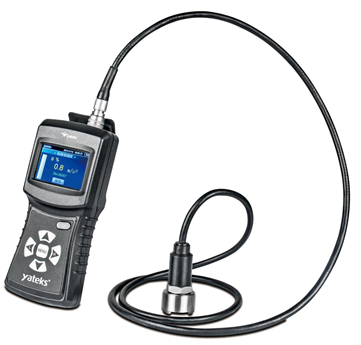Author: Michiko
Date: 2019/5/28
In order to timely diagnose the roller fault, the pressure tap is set in the key parts of the hydraulic system of the roller. The user can use the vibration measuring instrument equipped on the roller to quickly and easily find faults and reduce the troubleshooting in time.
If the rated speed of the diesel engine is normal, the roller can be driven 10m before and after, so that the oil seal of the vibration bearing box is fully lubricated. Then park the vibrating wheel on the old rubber tire, hang the neutral gear, start the diesel engine, run at the maximum speed, hold the palm of the hand on the spring-type frequency meter, put it on the front frame, and turn on the vibration in a very short time. Then measured whether the vibration frequency is 31 Hz (the eccentric shaft speed is correspondingly 1860 r/min).
If the measured vibration frequency is low, the oil leakage rate of the vibration motor should be checked. Run the roller to reach a working oil temperature of 500C. Park the vibrating wheel on the old rubber nozzle. The measuring hose is connected to the motor drain port and the other end is placed in the metering drum. Start the diesel engine at maximum speed and turn on the vibration. The oil leakage should not exceed 2.5L/min. If this value is exceeded, the motor should be fixed.
If the motor oil leakage rate is within the allowable range, the vibration circuit pressure should be checked. Run the roller to reach the working oil temperature (hydraulic oil temperature 500C), park the vibrating wheel on the old tire, and drive the wheel with a triangular block. Connect the 60MPa pressure gauge to the vibration system test port with the test hose, start the diesel engine at the maximum speed, turn on the vibration, observe the pressure gauge, and start the pressure (the pressure gauge reading of the motor at the beginning of the start) should be 19~21MPa, working pressure (The reading of the vibration motor during smooth running) should be 8~11MPa. If the starting pressure is low, the vibration pump should be checked. If the working pressure is significantly higher than 11 MPa, the vibration bearing should be checked.
When the working pressure is significantly higher than 11 MPa, the vibration motor should be removed and the axial clearance of the vibrating bearing should be checked. Push the vibration axis along the axial direction, there should be 1~2mm axial turbulence; then check the radial clearance of the vibrating bearing, and apply the radial force to the eccentric shaft with the boring bar. If the turbulence is obvious, it must change the bearing; finally check the free movement of the vibration shaft, attach a hexagonal bolt to the screw hole of the shaft end of the vibration shaft, turn the bolt 1900C clockwise with the sleeve wrench, and then release the wrench. If the vibration feels a significant resistance when it is swinging a few times, it is necessary to change the bearing.
If the starting pressure in the vibration circuit is low, the high-pressure hose on the vibration pump should be removed, the tubing interface should be sealed with a plug, and the 60MPa pressure gauge should be connected to the high-pressure port of the vibration pump, and the throttle lever of the diesel engine should be placed at the stop position. Turn the diesel engine with the starter motor. If the pressure is less than 10 MPa, replace the pump. If the pressure reaches 10 MPa, check the start control valve.
When checking the start control valve, loosen the wire connector screw. If the vibration switch is turned on and there is no power at the contact point of the socket, look for a circuit system failure and sufficient battery voltage. Remove the seat cover, loosen the nut on the electromagnetic coil, remove it together with the wire and socket, connect 12V DC power to the socket, and use a screwdriver to test whether the magnetic field is established. If there is no magnetic field, change the coil; if there is a magnetic field, Change the vibration valve.

